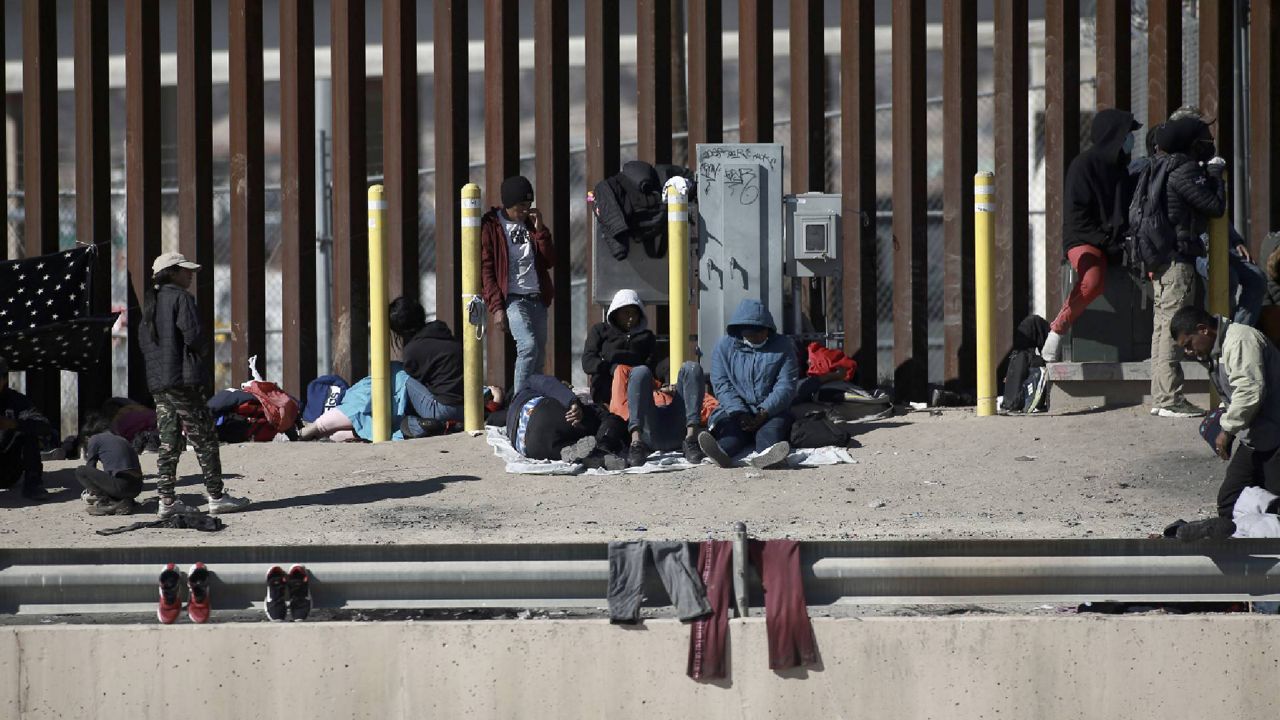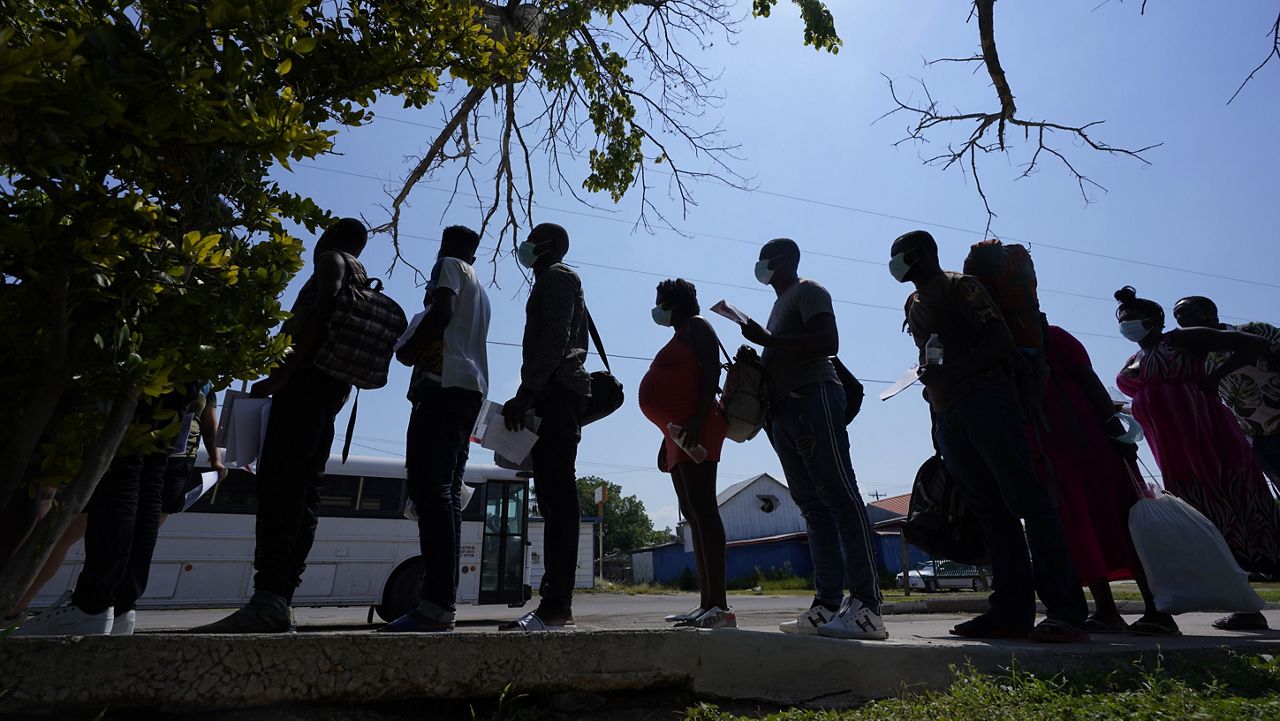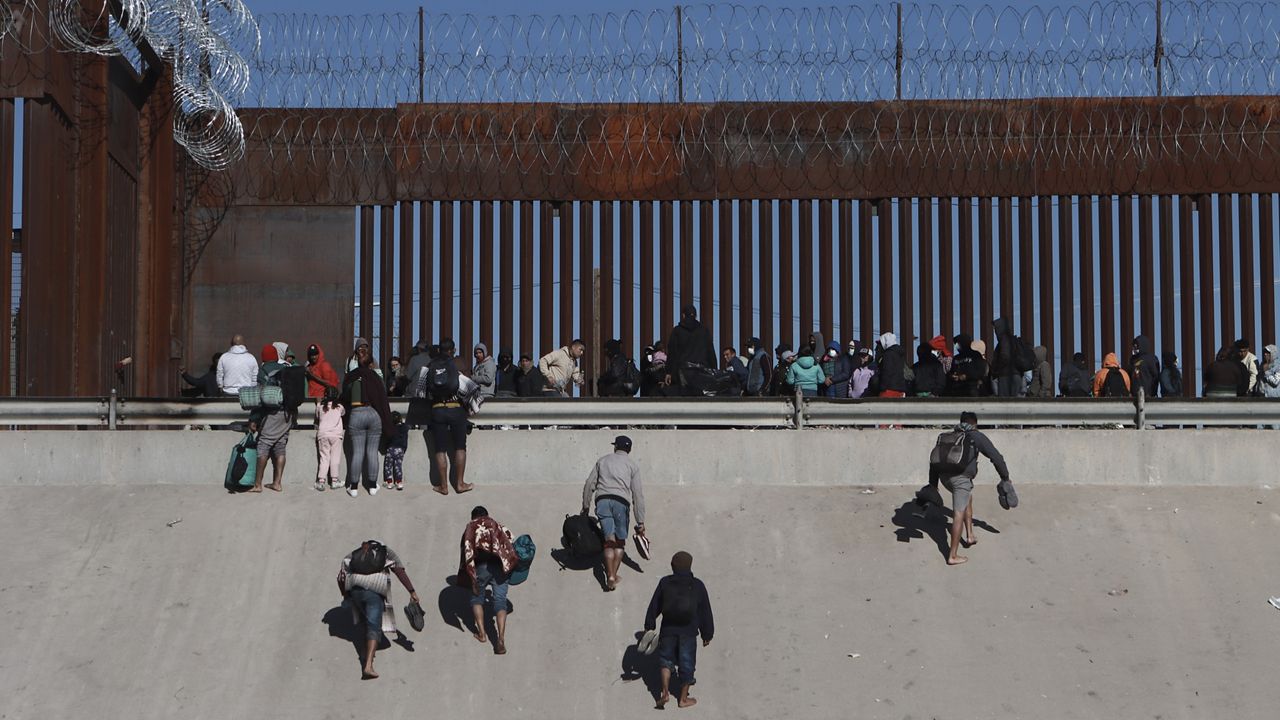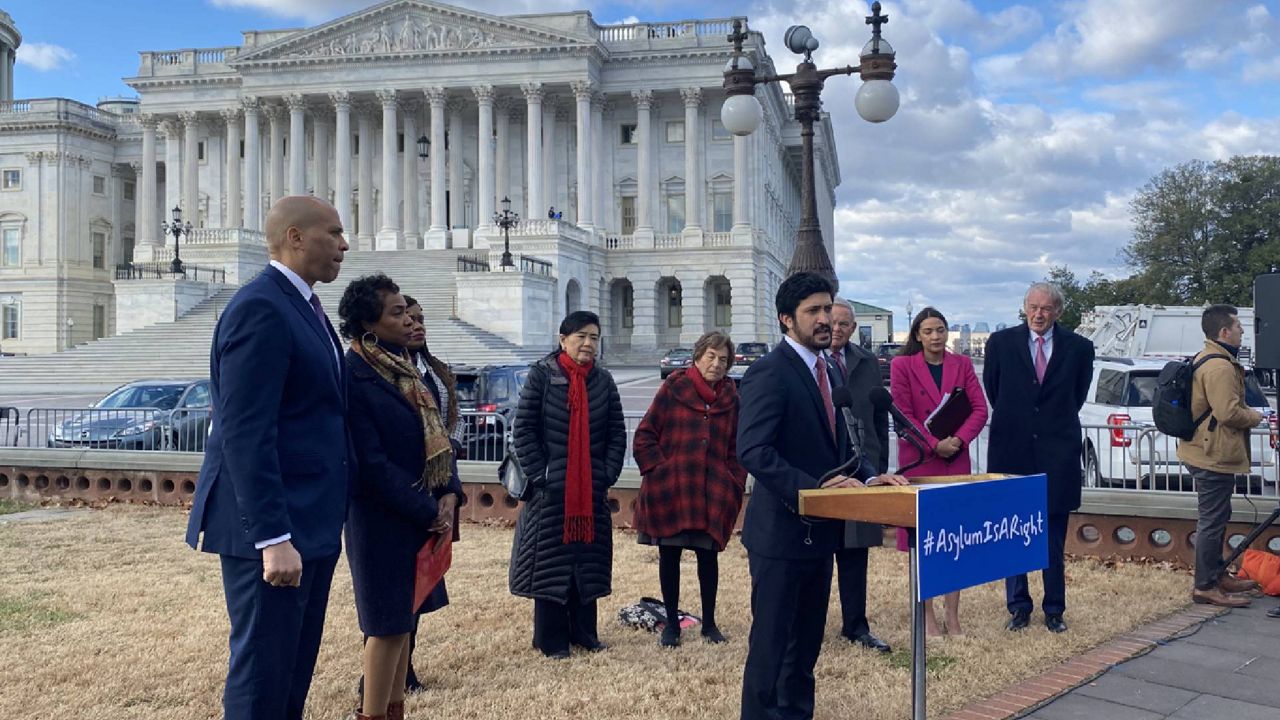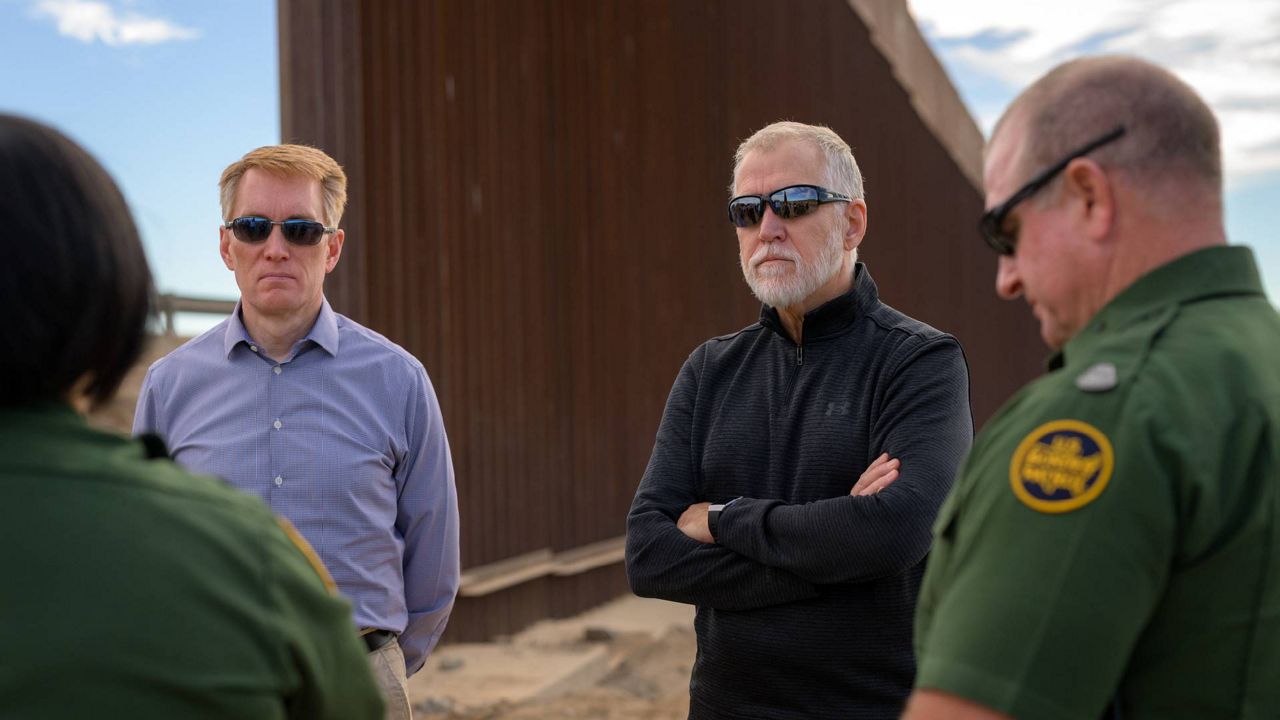The Biden administration has no plans to increase appointments under a new system for asylum-seekers to make claims along the Mexico border via mobile app, a U.S. Customs and Border Protection official told Spectrum News, amid frustration and confusion about the new process among migrants.
Migrants began showing up for appointments at U.S. ports of entry this week that they booked on the CBP One app, a tool that was recently expanded to be the primary way to claim asylum under a pandemic restriction called Title 42.
Making a claim via the app is not mandatory, a CBP official confirmed, but it is now “highly recommended,” a sudden shift this month that left migrants in the lurch, scrambling to book limited appointments and figure out the new smartphone app.
The intention of CBP One is to bring “order and safety” to the border and boost the efficiency of the asylum process, said Homeland Security Secretary Alejandro Mayorkas when he announced it earlier this month.
Appointments have filled up rapidly as they’re released each day for people waiting in central and northern Mexico to book a time at a U.S. port of entry. Migrants were previously able to claim an exception to Title 42 through local non-governmental groups organizing the claims.
Each morning, appointments are released for 13 days in advance, a CBP official told Spectrum News, meaning people are now booking appointments for February.
There are currently no plans to expand the number of appointments released each day at eight ports of entry, the official confirmed, citing limits under Title 42, which allows officials to immediately expel many migrants back to Mexico once they reach the border.
Some immigration advocates shared screenshots on Twitter this week of the app’s full appointments, directing asylum-seekers to check in the next day.
“We are stranding people in Mexico with no idea if or when they can apply to enter legally,” wrote David Bier, associate director of immigration studies at the Cato Institute.
One issue, the CBP official said, is that some migrants are booking multiple appointments. Others have large families for which each member needs an appointment.
Immigration advocates, meanwhile, are concerned people are excluded even before they get to the scheduling step, creating undue barriers to making an asylum claim, which is a legal immigration path.
“Is this app shutting people out from these processes?” said Raul Pinto, senior staff attorney at the American Immigration Council. “People who may not understand how to use the app, people who may have limited productivity, like limited Wi-Fi, or just limited technological knowledge. The app is not an easy app to use.”
People qualify for asylum if they have credible fear of persecution in their home country because of their race, religion, political opinion or membership in a certain social group.
In Reynosa, Mexico this week, Spectrum News spoke to Clarisa, who had been waiting with her daughter near the border for months to make her claim for asylum to Title 42. When she arrived at a shelter for her turn this week, she was clearly frustrated.
“What about us? We were registered since 2022, and then the app comes out in January,” she said.
Pastor Hector Silva, director of the shelter Senda de Vida, was left to communicate to a large crowd outside his building this week that the app was now the way to make a claim.
“There have been protests, there are disagreements, there are fights,” he said. “There are people who the first thing they say is, ‘I got here three months ago. It’s not fair.’”
When migrants do get one of the limited appointments and appear at a port of entry, they first meet with a CBP officer to see if they qualify for asylum, the CBP official explained. They do not meet with an asylum officer the same day.
Advocates have also cited privacy concerns about CBP One, since the app uses images of the face and GPS to verify a migrant’s location.
According to a Privacy Impact Statement released by the Department of Homeland Security, the app does not store migrants’ information or location submitted on the app, and images of the face are used for matching images in future steps of the process, not to identify someone based on their face alone.
Pinto of the American Immigration Council agreed that the effort to make processing at the border more efficient is “welcome,” despite persisting concerns about the app’s effectiveness.




